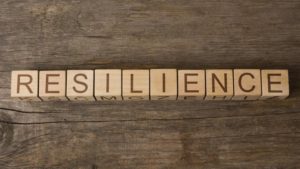
The counseling field has been buzzing about Trauma Informed Care for a number of years now. This has resulted in a strong and much needed push to move from “What’s wrong with you?” to “What happened to you?” Conversely, we find ourselves in a world where we treat behavioral health professionals much like other medical professionals; “What’s wrong with me and how are you going to fix it?” This theme is echoed throughout the health care system from our education methods, to our payer system, to our diagnostic criteria and treatment plans. With the rise of the use of the Adverse Childhood Experiences (ACEs) questionnaire, multiple researchers have proven that trauma has a long lasting impact, well into adulthood. In fact, medical researchers believe a higher ACEs score can actually predict an early death! So, organizations have banded together and sent the message that we must recognize the high occurrence of trauma and begin to make sure how we respond to survivors does not re-traumatize them and helps lead them to healing.
Yet, when I speak with respected peers, it seems that our Trauma Informed Care can actually be hurting the healing process. I know, some of you gasped and have a strong urge to stop reading. Bear with me just a moment longer. You see, if our focus swings to being solely focused on “what happened to you?” we can actually move to a world of re-victimization without meaning to. A peer who is a survivor of childhood sexual abuse stated, “If people only treated me as a survivor, I’d never have healed and created this great life.” I have sat in meetings where we are meant to create more Trauma Informed communities and walked away feeling helpless, and lost in a quagmire of politically correct tape. You see, as amazing as these scales and initiatives are, the majority focus on what HAS happened; not on what CAN happen from here.
As I look at people in my own life that have experienced various levels of trauma and as I work with clients whose trauma stories rival those of apocalyptic authors, I cannot help but stop and ask, “Why is it that some heal and thrive and some seem to merely survive?” The answer, I believe is in resilience. Although it seems to have a bit of a quieter voice, the resiliency movement in our field is growing. What excites me most is that a growing number of researched scales are including DYNAMIC factors as well as STAGNANT factors. For those of you who aren’t research geeks like myself, what this boils down to is that we are now talking about things we can change! Resiliency isn’t something that is innate to some and unattainable for others. Rather, it is something that is cultivated. If this is true (and I believe it is!) then this means it’s not too late! Whether you are a teen who is grappling with trauma for the first time, or a middle-aged person who has experienced long impacts of trauma and belief systems created during that time, it’s not too late! We can change some of the resiliency factors. (Please note: I have only said we can change some of the factors. Some things are out of our control and that makes them “unchangeable.” I haven’t discovered how to stop pain, suffering or trauma from occurring, but I think that a resiliency focused therapist/counselor can help you achieve the healing you so desperately want).
In the next couple of entries, I’m going to talk about what resiliency is, how I have seen it flourish, and the darker side to resiliency. But, today I’m posing this question to you. How would it impact you if you began to ask the following questions?
• What’s your greatest strength? (You’ve survived this long so even Darwin would say you’ve got some!!)
• What’s helped you survive this long? (Both internal and external things/behaviors/etc)
• What’s one thing you can add to your life that will help to get the healing and abundance you want in life?
Won’t you join me in the movement for Trauma Informed Resilience?